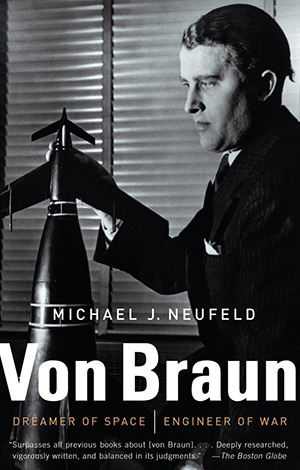Thanks to a $5M gift to the University of Melbourne (Australia), a lab is being established with the goal of bringing back the extinct thylacine (a.k.a. Tasmanian tiger or Tasmanian wolf) and developing genetic techniques that might help save rare species. Professor Andrew Pask will head the Thylacine Integrated Genetic Restoration Research (TIGRR) Lab.
Pask said the lab will "work with stem cells, gene editing and surrogacy, to assist with breeding programs to prevent other marsupials from suffering the same fate as the Tassie tiger," which offers great benefits even if we never see a live thylacine again. An interesting sidelight on this species is that sightings have continued since its presumed 1936 demise: it certainly lasted into the 1940s and maybe much longer, but it's hard to believe any are left after countless searches turned up nothing.)
The last known thylacine in 1936 (Public domain
Bringing back extinct species is a very, very tough nut to crack. It's been around as an idea for a long time.
One way to do it is by back-breeding living animals that carry some of the extinct type's genes until you bring out the right characteristics. Serious attempts were made with the quagga, a version of the plains zebra; the aurochs, the ancient cattle painted on cave walls; and the tarpan, an extinct breed of wild horse. These have gained varying degrees of success. I've seen reconstructed tarpans, known as Heck horses after the breeders, in a zoo: indeed, the tarpan reconstruction effort has been carried out twice from different stock. But is an animal that looks like an aurochs or a tarpan the real thing, or sort of a walking Xerox (for those old enough to know that I mean)?
Drawing of a Quagga, showing its brownish, incomplete striping. The Quagga Project, a back-breeding effort started in 1987 is getting closer to the right look. (picture in public domain) Genetic engineering has opened new possibilities, even if they don't include bringing back dinosaurs. We have DNA fragments from long-extinct animals, but the full genome only from those which died recently enough that we have well-preserved specimens. (In specimens preserved in formaldehyde, though, the chemical breaks down DNA.) Assembling a full genome from creatures like the mylodon or giant ground sloth, from which hides thousands of years old have been found, is possible in theory, but one interested geneticist, Russell Higuchi, said when Jurassic Park came out that the problem was like reassembling, in the dark, a shredded encyclopedia written in a foreign language, all without using your hands. Technology like CRISPR is making it more practical, but how much more remains to be seen. A Pyrenean ibex, or bucardo, was cloned in 2003 with material from the last known member of its subspecies, which had been biopsied two years before its death in 2000. The mother was a closely related subspecies, of the Iberian ibex (a.k.a. wild goat), but the resulting animal died soon after birth. An endangered gaur (a.k.a. Indian wild ox) was cloned in 2001, although that calf died of dysentery two days after the apparently successful cloning.
A plan to bring back the woolly mammoth has garnered $75M from venture capitalists and (really) Paris Hilton. This has been proposed before. The approach that was long in vogue was to insert the genome of a mammoth from a frozen specimen into the egg of an Asian elephant (the closest living relative) and get a hybrid. Future generations would, following the same plan, become more and more mammoth until the result is almost a mammoth, assuming the line didn't die out to to inbreeding.
Woolly mammoth. The Woolly Mammoth Revival Project wants to bring the species back. (Public Domain)Even if fertilization and implantation work, which may take countless tries (it took hundreds of attempts to get the unfortunate bucardo), one or two lost pregnancies could derail such a scheme. The logistics are especially difficult because Asian elephant pregnancies can take 22 months. The elephants are probably not big on the whole idea. Neither are animal rights activists or some scientists. The newest effort, by a Texas firm called Colossal Biosciences, plans to use artificial mammoth wombs, but first needs to invent and perfect this costly technology.
The most famous fictional discussion of de-extinction by cloning/genetic engineering is in the Jurassic Park universe. Another fictional take on the whole business appears in a well-researched thriller by Jonathan Maberry, The Dragon Factory. Rogue (of course) scientists trying to create better soldiers have brought the technology to such a level that, not only can extinct species be brought back (one man observes that dodo does not, in fact, taste like chicken) but can create a unicorn from a horse with a little messing around. (See my review in my book Of Books and Beasts. You knew I was going to get that in somewhere.)
Might we someday see a revised ancient (or modern) mammal? It may be impossible. Or it may take a long time and a lot of money. Or we just might encounter so many obstacles that we call the whole thing off.
Matt Bille
Matt Bille - SciWriter, LLC
www.mattbille.com
mattsciwriter@protonmail.com







